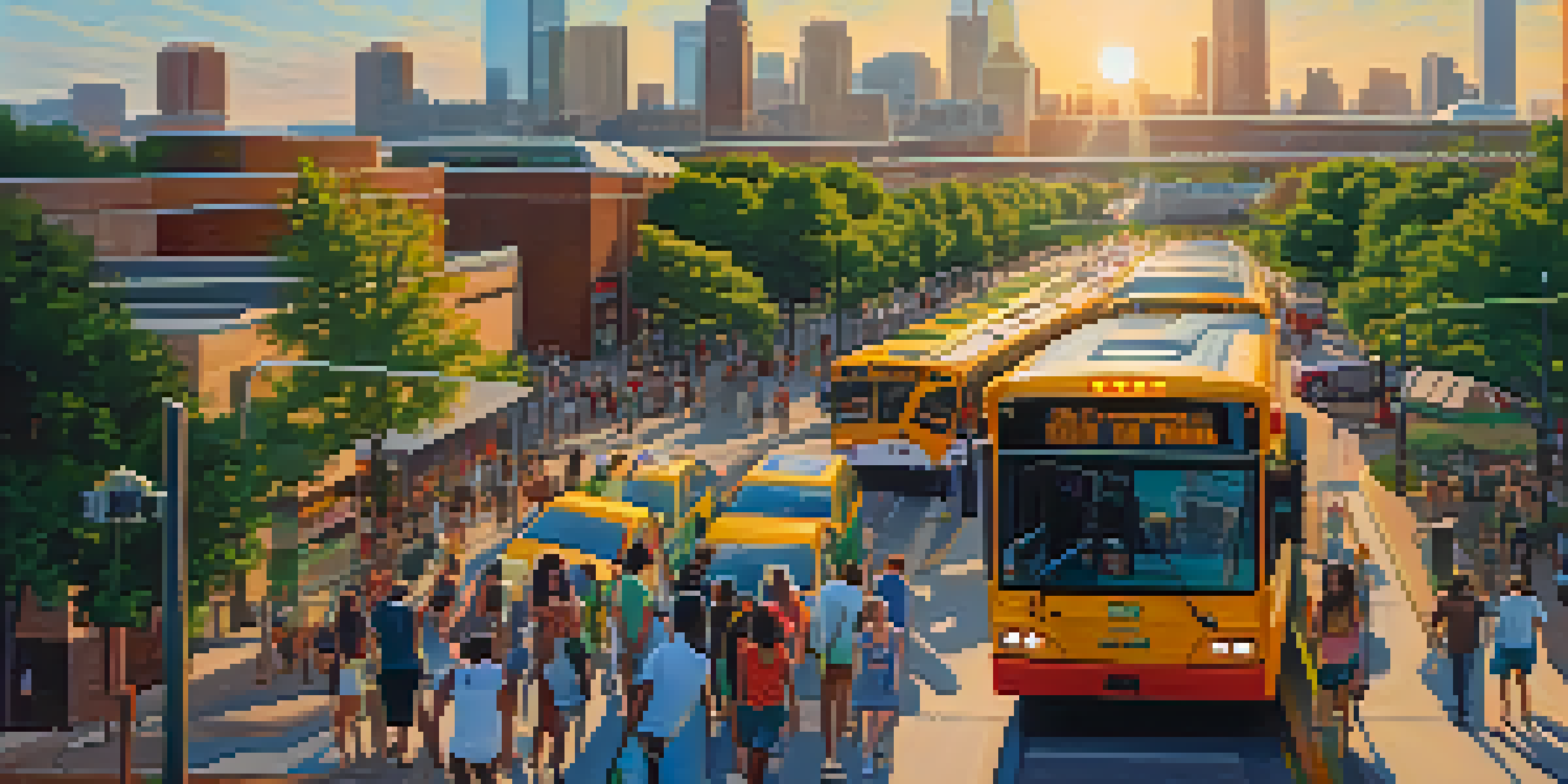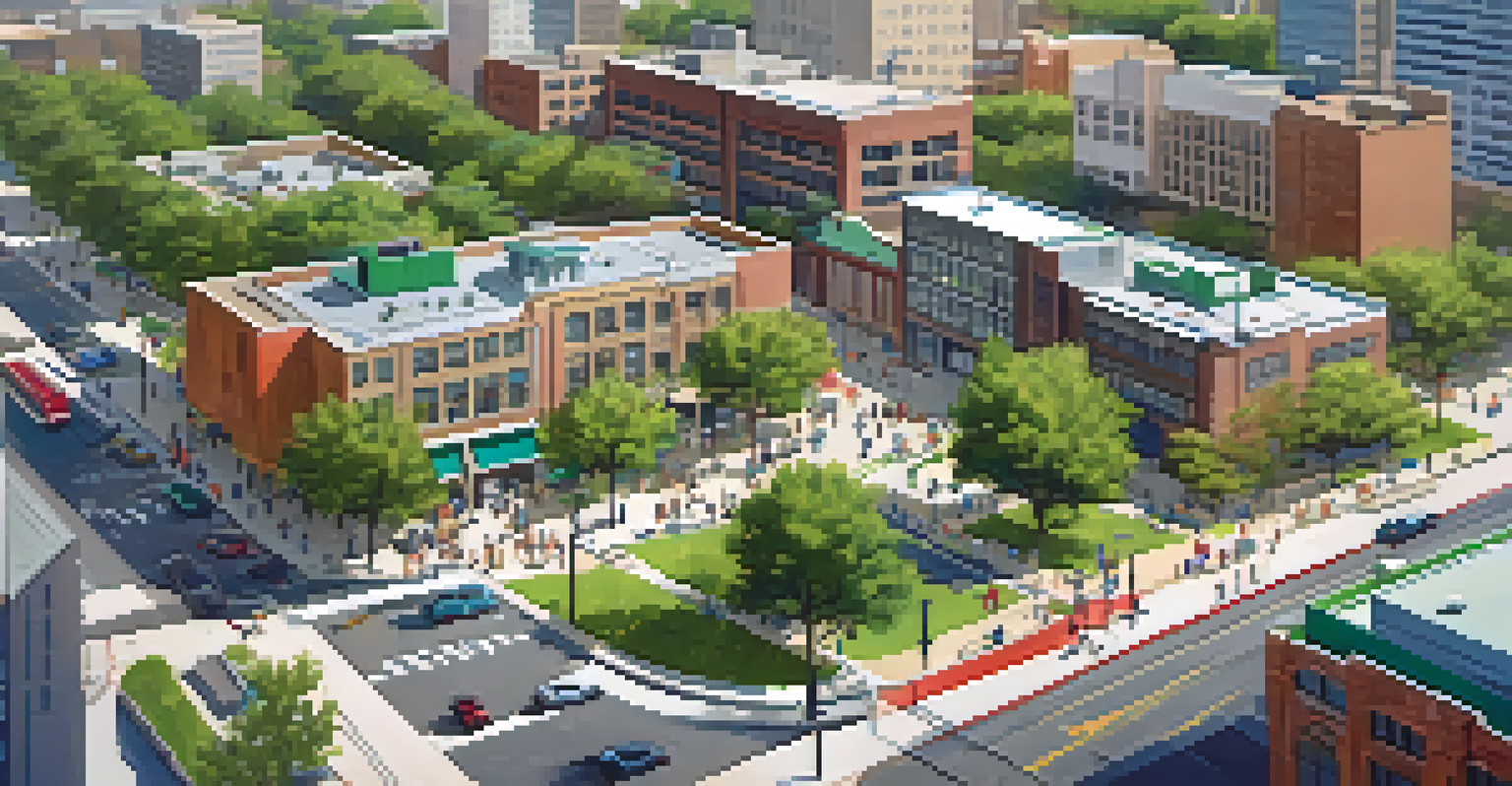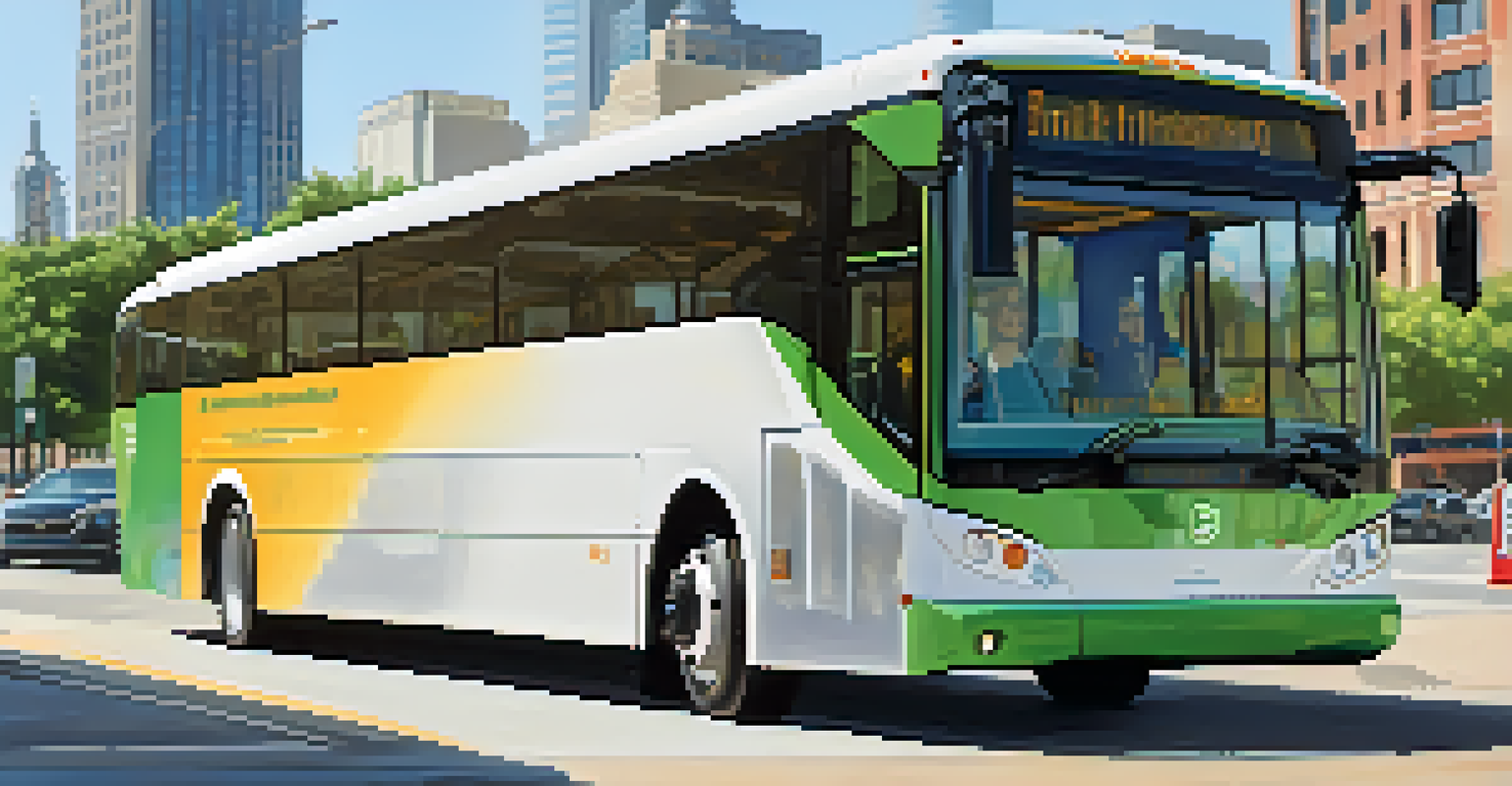Environmental Impact of Dallas Public Transportation Updates

Understanding the Current State of Dallas Public Transportation
Dallas public transportation has been evolving, aiming to meet the needs of its growing population. With an extensive network of buses and light rail, DART (Dallas Area Rapid Transit) plays a pivotal role in reducing road congestion. However, the environmental impact of this system is often overlooked, especially in the face of urban expansion and increasing vehicle emissions. Understanding the current state of these systems helps frame the conversation about their environmental footprint.
Public transportation is a vital part of a sustainable community. It connects people to jobs, education, and essential services while reducing traffic congestion and air pollution.
Many residents rely on public transport for daily commutes, which can significantly lessen the number of cars on the road. This shift is essential, as studies show that public transit can reduce greenhouse gas emissions by up to 45% compared to private vehicles. As Dallas continues to grow, optimizing public transport can lead to a more sustainable urban environment and lessen individual carbon footprints.
Moreover, the integration of newer technologies and environmentally friendly practices in public transportation is crucial. The implementation of electric buses and energy-efficient light rail systems are just a few examples of how Dallas is striving to improve its environmental impact. As these upgrades take place, residents can expect not only enhanced service but also a more eco-friendly commuting experience.
The Role of Recent Transportation Updates on Emissions
Recent updates to Dallas' public transportation system are designed to address the pressing issue of emissions. By introducing more electric and hybrid buses, the city is taking significant steps towards reducing air pollution. These updates reflect a broader trend in urban areas, where cleaner public transport options are becoming the norm rather than the exception.

In addition to reducing emissions from vehicles, these updates aim to encourage more residents to opt for public transport rather than driving. The more people that utilize these services, the fewer cars there are on the road, which translates to lower overall emissions. This becomes a win-win situation, benefiting both the environment and the community at large.
Sustainable Transit Reduces Emissions
Dallas public transportation updates, including electric and hybrid buses, are essential for lowering air pollution and encouraging residents to use public transit.
It’s important to note that every small change adds up. For instance, DART's commitment to integrating renewable energy sources into their operations can lead to substantial long-term benefits. As these initiatives gain traction, they can help Dallas become a model for other cities aiming to lessen their environmental impact.
Community Impact of Enhanced Public Transportation
Improvements in public transportation not only benefit the environment but also enhance community connectivity. With better transit options, residents can access jobs, schools, and healthcare more easily, fostering socio-economic development. This enhanced mobility can lead to reduced traffic congestion and a more vibrant urban landscape.
The future of urban transportation lies in sustainable solutions that prioritize the environment and community needs. Investing in public transit is not just about movement; it's about moving towards a healthier planet.
Moreover, as public transport becomes more reliable and efficient, it encourages a cultural shift towards sustainable living. Communities begin to embrace the idea of using public transit as a primary mode of transportation, which can promote healthier lifestyles. Walking to and from transit stations can increase physical activity among residents, contributing to overall well-being.
The ripple effect of these improvements can also lead to increased property values in areas well-served by public transport. As more people choose to live near transit hubs, we see a transformation of neighborhoods. This creates a more interconnected community, which is crucial for fostering local economies and reducing environmental footprints.
Long-term Environmental Goals for Dallas Transportation
Dallas has set ambitious long-term environmental goals that align with its transportation updates. The city aims to reduce greenhouse gas emissions by 40% by 2030, a target that requires significant changes across various sectors, including public transit. These goals reflect a commitment not only to improving transportation but also to enhancing the overall quality of life for residents.
To achieve these objectives, Dallas is focusing on developing a comprehensive transit plan that incorporates sustainability at its core. This includes increasing public transport options, enhancing service frequency, and ensuring accessibility for all. As the city makes strides towards these goals, it positions itself as a leader in sustainable urban development.
Public Transit Enhances Community Access
Improved public transportation fosters better access to jobs and services, leading to socio-economic development and a more interconnected community.
Furthermore, community involvement is crucial in realizing these long-term goals. Engaging residents in discussions about future transit developments ensures that their needs are met while also promoting environmentally friendly practices. This collaborative approach can help foster a culture of sustainability that extends beyond transportation.
The Economic Benefits of Sustainable Public Transportation
Investing in sustainable public transportation yields significant economic benefits for the Dallas area. By reducing reliance on cars, the city can lower road maintenance costs and decrease the need for extensive parking infrastructure. These savings can then be redirected towards enhancing public transit services, creating a positive feedback loop.
Moreover, improved public transportation attracts businesses and stimulates local economies. When employees have reliable access to transit, companies are more likely to set up shop in the area, creating jobs and generating revenue. This economic growth is crucial for maintaining the vibrancy of Dallas as it continues to expand.
Additionally, as public transit becomes more efficient and eco-friendly, it can attract federal and state funding aimed at promoting sustainable initiatives. These funds can help further enhance the public transportation system, creating a robust network that benefits both residents and the environment long-term.
Public Awareness and Engagement in Transportation Issues
Public awareness plays a critical role in the success of Dallas' transportation updates. Educating residents about the environmental benefits of using public transit can lead to greater community engagement and increased ridership. Campaigns that highlight the positive impacts on air quality and sustainability can motivate individuals to make the switch from driving to using public transportation.
Moreover, engaging the community in discussions about transportation initiatives can foster a sense of ownership and responsibility. When residents feel that their voices matter, they are more likely to participate actively in sustainable practices. This engagement can create a culture of accountability, where residents advocate for continued improvements in public transit.
Investment Fuels Economic Growth
Sustainable public transportation not only lowers maintenance costs but also attracts businesses, stimulating economic growth and creating jobs in Dallas.
Social media and local events can serve as effective platforms for spreading awareness. By sharing success stories and updates on transit developments, Dallas can keep the community informed and engaged. A well-informed public is essential for the sustained success of these initiatives, ensuring that environmental goals are met.
Future Prospects for Dallas' Public Transportation System
Looking ahead, the future of Dallas' public transportation system appears promising, with a focus on sustainability and environmental impact. As technologies evolve, we can expect further innovations in public transit, such as autonomous vehicles and smart transit systems that adapt to riders' needs. These advancements could revolutionize the commuting experience for Dallas residents.
Additionally, the ongoing collaboration between city planners, environmentalists, and community members will be vital in shaping the future of public transportation. By prioritizing sustainability in every decision, Dallas can ensure that its transit system remains efficient and environmentally friendly. This collective effort will also serve as a model for other cities facing similar challenges.

Ultimately, the success of these initiatives will depend on continued investment, community engagement, and a shared vision for a greener future. As Dallas embraces this journey, it can lead the way in transforming urban transportation and significantly reducing its environmental footprint.